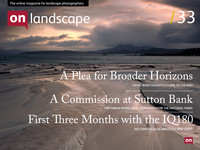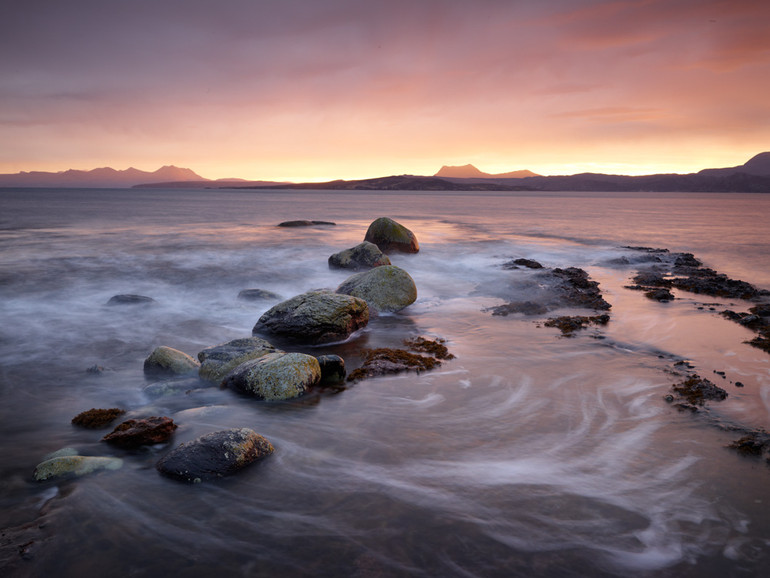Joe report on his early work with the Phase One IQ180 digital back
"I was extravagant in the matter of cameras – anything photographic – I had to have the best. But that was to further my work. In most things I have gone along with the plainest – or without."
Edward Weston said many things that have resonated with me over the years and this quote is one of them. I include it here because it would be all too easy to assume that any owner of a Phase One IQ180 might simply be a wealthy dilettante. My decision to invest in this enormously expensive item was based on having a reasonably successful medium format digital workflow, a camera system with which it was already fully compatible (Linhof Techno), and an opportunity to buy a used, demo version of the IQ. Even given the latter, and my existing Phase OneP45+ back, and a Horseman camera to trade in, this was still a huge investment. Fortunately, Mrs C became resigned to my curious priorities many years ago!
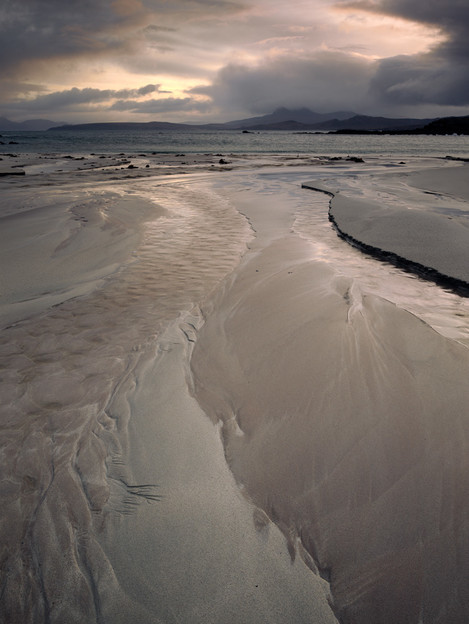 I certainly don't want to appear defensive, but I do think it is important to set the context. Yes I do make my living from photography, mainly as a working photographer. Yet many of my photographic contemporaries and colleagues are artist or enthusiast photographers who cannot necessarily always depend on their photography to 'bring home the bacon'. You may be one of them. In which case you may feel this article is completely irrelevant. On the other hand, I remember as a teenager being addicted to Car magazine. I would always turn to the latest Lamborghini/Ferrari/Aston Martin test on my first dip into the mag, which sadly (for a nascent environmentalist) was my excitement 'fix' in those youthful days. Was I ever likely to buy one? Of course not, but my curiosity as to how these ultimate driving machines actually drove was intense. The cost of an IQ180 is somewhat less eye watering, but for anyone whose disposable photographic income has to be considered carefully, this may seem a fair analogy.
I certainly don't want to appear defensive, but I do think it is important to set the context. Yes I do make my living from photography, mainly as a working photographer. Yet many of my photographic contemporaries and colleagues are artist or enthusiast photographers who cannot necessarily always depend on their photography to 'bring home the bacon'. You may be one of them. In which case you may feel this article is completely irrelevant. On the other hand, I remember as a teenager being addicted to Car magazine. I would always turn to the latest Lamborghini/Ferrari/Aston Martin test on my first dip into the mag, which sadly (for a nascent environmentalist) was my excitement 'fix' in those youthful days. Was I ever likely to buy one? Of course not, but my curiosity as to how these ultimate driving machines actually drove was intense. The cost of an IQ180 is somewhat less eye watering, but for anyone whose disposable photographic income has to be considered carefully, this may seem a fair analogy.
I digress. The IQ180 replaced my Phase One P45+ (39mp) and is intended to play the role of workhorse landscape camera. Although I do still shoot 5x4 (and have ideas to shoot on 10x8 in the waiting room of my imagination) I admit that my film shooting days are recreational now, although no less important for being so. My daily work is done digitally. I should emphasise that I had no particular need of more pixels. It was other considerations that prompted me to change.
When we did the Great Camera Test back in December(?) I had the chance to see the IQ at work properly for the first time. Undoubtedly its performance then persuaded me to take the plunge, so to an extent I knew what to expect. As well as having stellar resolution it exhibited immense dynamic range, excellent colour and a simple intuitive touch screen interface.
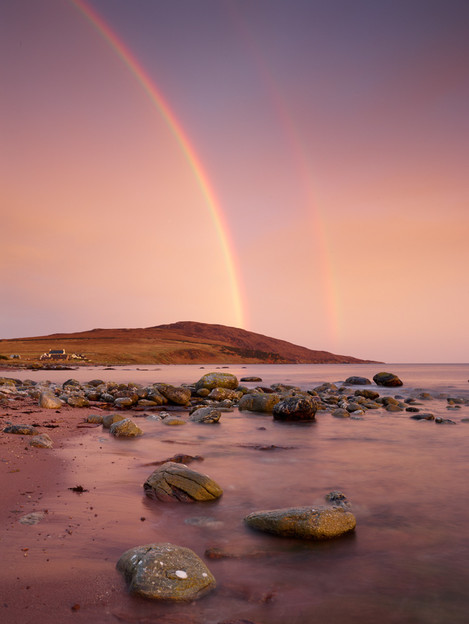 Since having it I have mostly used it mounted on the adapter plate that fits it to my Linhof Techno. One of the first things I did was to run an exhaustive (if not especially scientific) series of diffraction tests, outside, using my longer and mostly older film lenses. This was in part to test their absolute resolution, but also to see how they compared to one another. The first thing I discovered was that focusing the Techno is even more critical with the IQ, as there really is no hiding place once the image is at 100% on screen. Saying that, I was able to discover that several of my venerable 5x4 optics performed stoutly with this sensor. The testing procedure even gave me the confidence that, used with care, a solid tripod and an absence of wind, even my Schneider 210mm f/6.3 Xenar (single-coated, four elements) would perform well. At the right aperture (f/11, no more, no less!)
Since having it I have mostly used it mounted on the adapter plate that fits it to my Linhof Techno. One of the first things I did was to run an exhaustive (if not especially scientific) series of diffraction tests, outside, using my longer and mostly older film lenses. This was in part to test their absolute resolution, but also to see how they compared to one another. The first thing I discovered was that focusing the Techno is even more critical with the IQ, as there really is no hiding place once the image is at 100% on screen. Saying that, I was able to discover that several of my venerable 5x4 optics performed stoutly with this sensor. The testing procedure even gave me the confidence that, used with care, a solid tripod and an absence of wind, even my Schneider 210mm f/6.3 Xenar (single-coated, four elements) would perform well. At the right aperture (f/11, no more, no less!)
Diffraction is one of the mysteries of practical optics. It is not a mystery theoretically, as my 18 year old son Sam explained the reasons for it to me from his A-level physics. But in practical terms what does it really mean? I am sure that most readers are aware that images viewed on screen at 100% will exhibit loss of fine detail at smaller apertures due to the effects of diffraction. What diffraction creates in essence, is a fine detail vs depth of field trade-off. Which of these two is more important, when, where and how will need addressing another time. It is my hope to do a more in-depth look at this, what it means in a practical final print-making context in a future issue of OnLandscape. But for now we should remember, "Use the wider or mid-range apertures unless depth of field is critical" is a wise tactic, and in terms of most medium format lenses that means f/11 or wider.
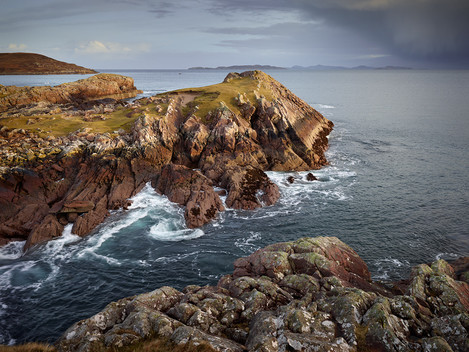 Second digression over. What is the IQ like to use? For anyone with a 5D Mk2 and an iPhone 4S, nothing that the IQ does at the user coalface will seem especially amazing. But coming from the P45+ it is a giant leap forward. The P series backs, robust and practical as they are, have a good histogram and a bomb-proof feel. That is really the nicest thing that can be said about their user interface. Which is fine if, like me, previously you have been shooting film. But the IQ is great to use, encourages careful scrutiny of the playback image, and inspires huge confidence. The resolution of the screen is amazing, like the retina display of an iPhone 4, and the touch screen is accurate, progressive and predictable. There are various playback and display modes, and they are very simple and easy to understand. I am from the 'click buttons until it works' school of thought rather than the 'read the instruction manual' academy. The IQ explains everything very quickly and easily through its short menu system, and all the essentials are in the main browsing playback mode.
Second digression over. What is the IQ like to use? For anyone with a 5D Mk2 and an iPhone 4S, nothing that the IQ does at the user coalface will seem especially amazing. But coming from the P45+ it is a giant leap forward. The P series backs, robust and practical as they are, have a good histogram and a bomb-proof feel. That is really the nicest thing that can be said about their user interface. Which is fine if, like me, previously you have been shooting film. But the IQ is great to use, encourages careful scrutiny of the playback image, and inspires huge confidence. The resolution of the screen is amazing, like the retina display of an iPhone 4, and the touch screen is accurate, progressive and predictable. There are various playback and display modes, and they are very simple and easy to understand. I am from the 'click buttons until it works' school of thought rather than the 'read the instruction manual' academy. The IQ explains everything very quickly and easily through its short menu system, and all the essentials are in the main browsing playback mode.
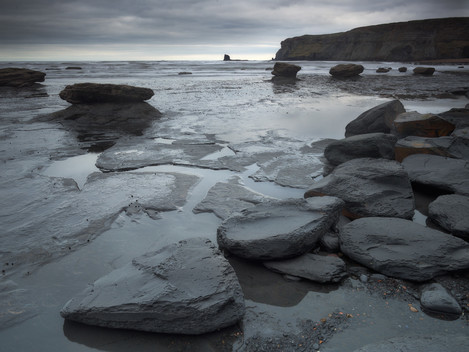 For landscape photographers it has a stunning 'fore and aft' live spirit level (so does the Techno itself, but experience has shown me that the IQ's is more accurate!). This can be used full screen, or viewed smaller in the browsing side bar. There is an excellent exposure warning system, and a focus mask, straight from Capture One (Phase One's raw processing software). This is also an enormously helpful quick fix for focus checking when time doesn't allow for an extensive scrutiny of the picture at 100%. The back has an auto feature which formats the image to the orientation of the back, but it can also be customised to play back at 90 or 180º, the latter being especially desirable for ex large format photographers wishing to inspect their images inverted. As far as I know Phase One are the only camera maker to have followed this suggestion (mine). Now, in live view that would be even better…
For landscape photographers it has a stunning 'fore and aft' live spirit level (so does the Techno itself, but experience has shown me that the IQ's is more accurate!). This can be used full screen, or viewed smaller in the browsing side bar. There is an excellent exposure warning system, and a focus mask, straight from Capture One (Phase One's raw processing software). This is also an enormously helpful quick fix for focus checking when time doesn't allow for an extensive scrutiny of the picture at 100%. The back has an auto feature which formats the image to the orientation of the back, but it can also be customised to play back at 90 or 180º, the latter being especially desirable for ex large format photographers wishing to inspect their images inverted. As far as I know Phase One are the only camera maker to have followed this suggestion (mine). Now, in live view that would be even better…
Live View is a 'feature' which is symbolised by a small movie camera icon in the modal display. I have tried it, and was hopeful that this feature would be one I could use, as in the future I imagine myself using a much lighter outfit. (My working pack remains solidly stuck at around 18kg!) That might well mean using a camera that relied on an accessory viewfinder and guesstimated focusing (no sliding back).
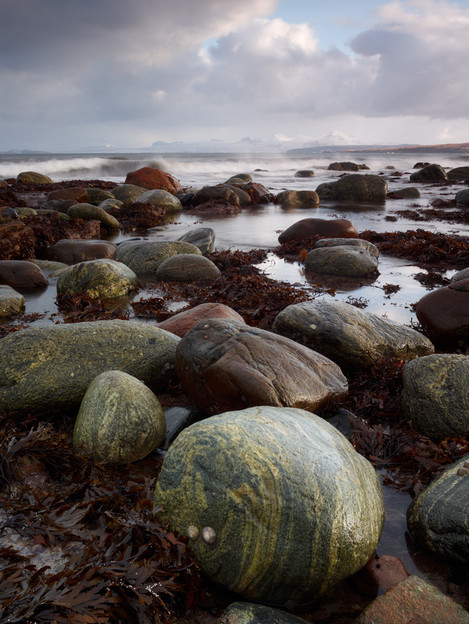 Of course I wouldn't be happy with guesstimated focusing and this is where live view, and its potential for magnification, would come in. In practice, so far with the IQ I have found the rendering of live view rather grainy, oddly-coloured and slow (1 second plus refresh rate). For now I have abandoned it as I am getting such great results with the Techno and the sliding back (and my Silvestri 10x loupe). So for anyone expecting anything as smooth and impressive as the live view in a Canon 5D Mk2, disappointment awaits. I am sure this is a CCD vs CMOS issue. Chris Ireland of Phase One/Direct Digital Imaging assures me that improvements are in the pipeline and that he already has some workarounds. We will see.
Of course I wouldn't be happy with guesstimated focusing and this is where live view, and its potential for magnification, would come in. In practice, so far with the IQ I have found the rendering of live view rather grainy, oddly-coloured and slow (1 second plus refresh rate). For now I have abandoned it as I am getting such great results with the Techno and the sliding back (and my Silvestri 10x loupe). So for anyone expecting anything as smooth and impressive as the live view in a Canon 5D Mk2, disappointment awaits. I am sure this is a CCD vs CMOS issue. Chris Ireland of Phase One/Direct Digital Imaging assures me that improvements are in the pipeline and that he already has some workarounds. We will see.
What of the much-discussed 'inferior viewing experience' going from 5x4 to the 6x4.5cm viewing size, when using a view camera? I make no bones about, 5x4 wins by a mile for viewing. But, once accepted and persevered with I have found my ability to compose upside down on a ground glass screen at this size is perfectly possible. I often use a Hasselblad 'top' viewer, which has a 3x magnifier and shows the whole screen. I finish the process with a Silvestri 10x loupe, and this gives me reasonable security that I have done any tilt adjustments correctly. In practice, setting up a Techno and a medium format back actually takes me a little bit more time and trouble than a 5x4inch Ebony. Of course all the preceding comments would apply to any technical view camera used with this format and not just the Techno.
Within the menu of the IQ itself, most of the features are self explanatory and the power saving management features are highly configureable, and needed, as I will discuss later.
The huge capture files take their toll in memory. To avoid the irritation of running out of card space and to keep the waiting time on the raw writing to a minimum I load a 32GB/60mbs CF card, and carry a spare; small beer investment these days when everything else is taken into account.
The final operational point to consider is battery consumption. There has been some discussion of this on the internet, and there is no doubt that, compared to the P45+ the IQ is a hungry beast. When I first started using it on the Techno I took advantage of a setting in the menu called 'Zero latency'. This allows the IQ to be used with a technical camera and without a wake-up cable. The absence of wake-up cable makes timing of exposures far easier, especially in relation to sea waves and anything where timing is fractions of a second critical. But, it does mean that the sensor is live all the time that the back is on. With normal latency the sensor powers up nanoseconds before each exposure is made (or for an up to five second delay when using the half pressure of a wake-up cable).
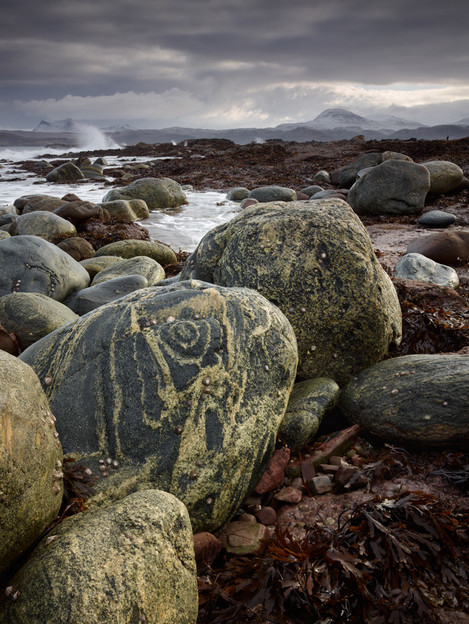 Now, while all this might seem obscure, the effect is significant. In my first month I was getting just about 20 exposures per battery before the back complained of insufficient power! As I discovered, this was partly down to the batteries I had being a few years old and starting to lose power as their charge declined.The IQ needs a hefty shot to keep it alive and a failing battery causes problems when the P45+ would plug along a good while longer. I was also over-using the editing potential of the back while waiting for the light etc, as it is such a pleasure to use. But the main issue was the zero latency. I could either go back to normal latency and use a wake-up cable, or continue using zero and keep turning the back off during downtimes. The latter tactic has been used and the effect has been to prolong battery life a lot. Nevertheless, I still carry at least three batteries (now new ones) fully charged with me for a full days shoot. In terms of fuel consumption the IQ is rather more Range Rover V8 than Polo Blue Motion.
Now, while all this might seem obscure, the effect is significant. In my first month I was getting just about 20 exposures per battery before the back complained of insufficient power! As I discovered, this was partly down to the batteries I had being a few years old and starting to lose power as their charge declined.The IQ needs a hefty shot to keep it alive and a failing battery causes problems when the P45+ would plug along a good while longer. I was also over-using the editing potential of the back while waiting for the light etc, as it is such a pleasure to use. But the main issue was the zero latency. I could either go back to normal latency and use a wake-up cable, or continue using zero and keep turning the back off during downtimes. The latter tactic has been used and the effect has been to prolong battery life a lot. Nevertheless, I still carry at least three batteries (now new ones) fully charged with me for a full days shoot. In terms of fuel consumption the IQ is rather more Range Rover V8 than Polo Blue Motion.
So much for minor irritations. The great thing is that while I found my previous Phase an excellent tool that did the job, the IQ makes the capture process a great deal more fun and enjoyable. That is not a matter of image quality, but quality of life! Such accurate feedback also inspires confidence.
However, all of these considerations will seem minor compared to the matter that Phase One have put at the forefront of our collective minds with the name of the back. IQ. Intelligence Quotient? Perhaps, but to photographers it is all about Image Quality. To an extent we have already covered this in the previously mentioned Great Camera Test. But that was one day, and as Tim would I am sure acknowledge, not a very inspiring one when it came to the images we were able to make, whether inside or outside of the studio.
* * *
Back in the Brecon Beacons in December I was impressed by the breadth of the landscape, and the rhythmic flow of the hills and ridges in the middle and far distance. A wide and moderately panoramic format would emphasise these qualities. The 40mm Digaron-W is my widest technical camera lens, and now it is wider than on the P45+, since the IQ has a larger sensor. Even so, stitching two horizontal exposures together was required to achieve the effect I was after, and this was done easily using the sliding back offset positions. However, even using a centre filter ND on that lens, which I now always do with offset captures, the colour cast was intimidatingly extreme.
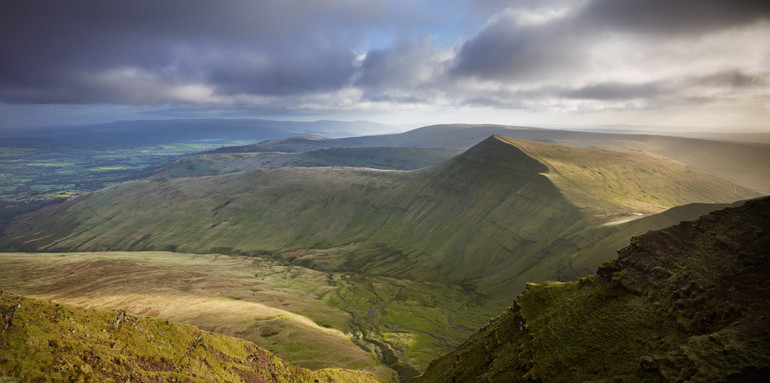 Colour casts are not an occasional irritant of using the back on a technical camera, they are a fundamental consideration that cannot be ignored or glossed over. The nub of the issue is this. Every view camera lens capture has, to some extent a degree of colour cast (Phase One's DSLR lenses have their cast, and any other aberrations, mapped out automatically in Capture One). With standard and long lenses these can often be overlooked as the native colours in the scene overwhelm the cast. But with wide angle lenses, and with any lens in a very low contrast or desaturated colour setting (imagine a misty, snowy scene for example) the colour cast is noticeable. Fortunately, all Phase One digital backs come with Capture One, and this software has a pretty well bullet-proof solution in the form of lens cast calibration (LCC) analysis. But you do need to shoot a lens cast capture image to analyse, and ideally as part of each image sequence in the session.
Colour casts are not an occasional irritant of using the back on a technical camera, they are a fundamental consideration that cannot be ignored or glossed over. The nub of the issue is this. Every view camera lens capture has, to some extent a degree of colour cast (Phase One's DSLR lenses have their cast, and any other aberrations, mapped out automatically in Capture One). With standard and long lenses these can often be overlooked as the native colours in the scene overwhelm the cast. But with wide angle lenses, and with any lens in a very low contrast or desaturated colour setting (imagine a misty, snowy scene for example) the colour cast is noticeable. Fortunately, all Phase One digital backs come with Capture One, and this software has a pretty well bullet-proof solution in the form of lens cast calibration (LCC) analysis. But you do need to shoot a lens cast capture image to analyse, and ideally as part of each image sequence in the session.
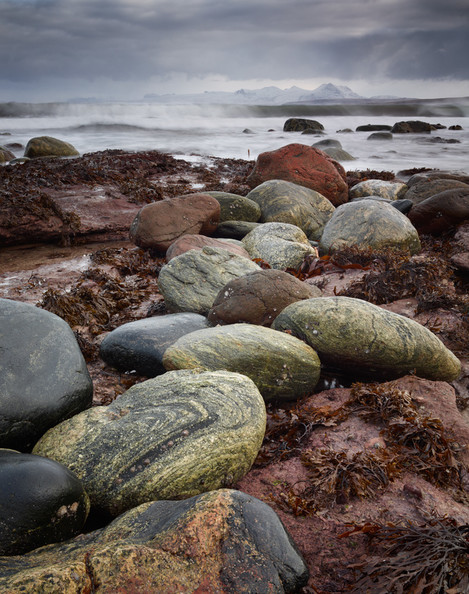 In the case of "northern slopes of Cribyn" the colour cast was enormous, especially at the edges, yet the LCC analysis sorted it out and I was able to make the stitch pretty well perfectly. Incidentally, while most people will never really notice much difference, the system can perfectly well be used with other cameras, and especially with wide angle lenses and with the afore-mentioned low saturation low contrast subjects, will very likely yield superior results. The fact that they can also be used to perfectly map and eliminate all dust spots, and, if desired, remove the effect of lens fall-off (not usually desirable in landscape, but nice to have occasionally) only serves to make this a worthwhile skill for the craft-orientated digital photographer.
In the case of "northern slopes of Cribyn" the colour cast was enormous, especially at the edges, yet the LCC analysis sorted it out and I was able to make the stitch pretty well perfectly. Incidentally, while most people will never really notice much difference, the system can perfectly well be used with other cameras, and especially with wide angle lenses and with the afore-mentioned low saturation low contrast subjects, will very likely yield superior results. The fact that they can also be used to perfectly map and eliminate all dust spots, and, if desired, remove the effect of lens fall-off (not usually desirable in landscape, but nice to have occasionally) only serves to make this a worthwhile skill for the craft-orientated digital photographer.
The wider perspective that my lenses now give means that the 40mm works like a 90mm on 5x4in, and the 50mm like a 110mm. This was my preferred combination of perspectives on 5x4in, so the extra coverage of the IQ is welcome.
Having done a lot of stitching, and quite a bit of tinkering in Capture One and Photoshop over the last few years, one of my New Years' Resolutions has been to do less in post-production. The absolute minimum necessary in fact. Is it possible that we see a lot of over-processed work these days because the fundamental characteristics of the output from many digital cameras is pretty bland? What I am finding with the IQ is that the base characteristics (once the LCC analysis is in place) is much more like film and much more like my memory of the colour. I am aware this is a hopelessly unscientific thing to say, and pure anecdote. But this is genuinely how it feels. Consequently, it is becoming much easier to fulfill my New Year's resolution (and I am not sure I ever said that before!)
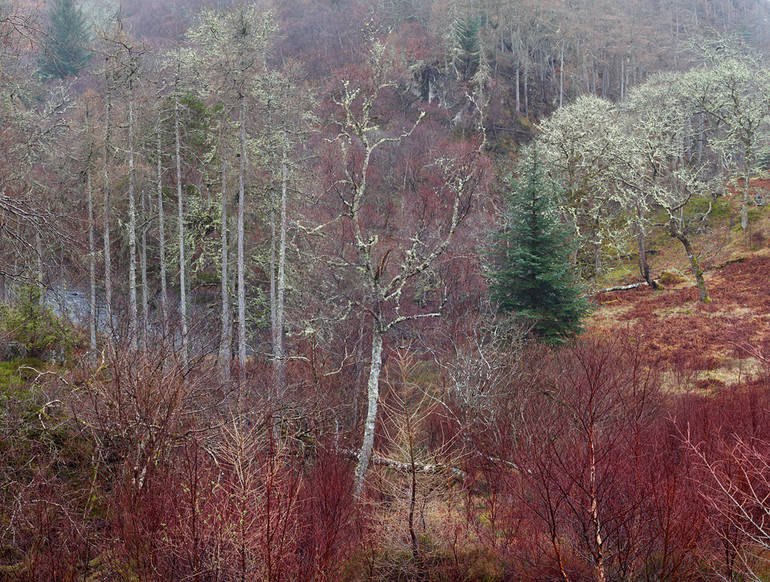 My next examples come from a week spent in Wester Ross, with Tim and Eddie. Apart from being a fantastic week in excellent company it gave me a chance to be out in the landscape every day with my camera. Sometimes I used the Techno, and sometimes a Phase One 645AFD camera which I had on loan. These very different cameras brought into sharp relief a major difference in the way photographs are made. The vast majority of the public make pictures in a casual and opportunistic way. Snap, walk away. The Phase camera, while bulky, makes snapping possible due to its ergonomic grip and easy to use operation (it even has autofocus for goodness sake!). It can be used as a point and shoot, which is saying something for a camera which, with the IQ180,
My next examples come from a week spent in Wester Ross, with Tim and Eddie. Apart from being a fantastic week in excellent company it gave me a chance to be out in the landscape every day with my camera. Sometimes I used the Techno, and sometimes a Phase One 645AFD camera which I had on loan. These very different cameras brought into sharp relief a major difference in the way photographs are made. The vast majority of the public make pictures in a casual and opportunistic way. Snap, walk away. The Phase camera, while bulky, makes snapping possible due to its ergonomic grip and easy to use operation (it even has autofocus for goodness sake!). It can be used as a point and shoot, which is saying something for a camera which, with the IQ180,
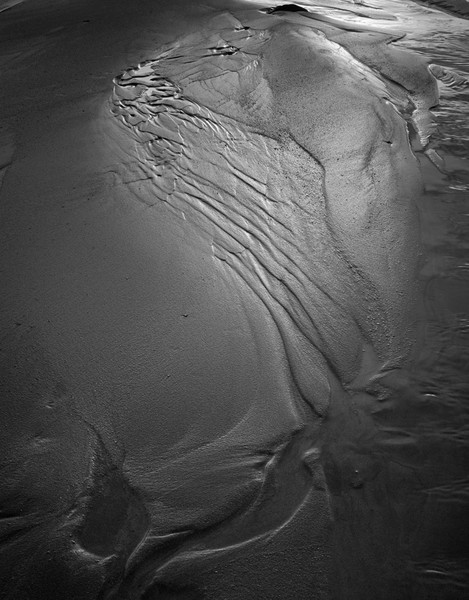 is the price of a nearly new S class Mercedes. Of course image quality is good, but as they say in Scotland, "ye cannae change the laws of Physics". Depth of field is the Achilles heel, for the landscape photographer, of any rigid bodied camera. Sure, focus stacking offers a software-based solution of sorts, but I personally still far prefer a one-exposure photograph where possible. Which is why I love the tilt mechanism of a view camera, and I'm also happier using filters instead of exposure blending.
is the price of a nearly new S class Mercedes. Of course image quality is good, but as they say in Scotland, "ye cannae change the laws of Physics". Depth of field is the Achilles heel, for the landscape photographer, of any rigid bodied camera. Sure, focus stacking offers a software-based solution of sorts, but I personally still far prefer a one-exposure photograph where possible. Which is why I love the tilt mechanism of a view camera, and I'm also happier using filters instead of exposure blending.
So, my favourite Wester Ross images were made with the Techno, although I did have one especially memorable sunrise with the 645AFD, the results of which certainly do more than pass muster.
I have long believed in a photography which is essentially 'subject driven'. In other words the photographer works to place his subjects at the heart of the viewer's consciousness, rather than emphasising the photography-ness of his or her pictures, and by implication how clever he or she is. In other words, the more 'transparent' or invisible the medium is, the better. That to a large extent drove my adoption of 5x4in many years ago. I was interested in the qualities of 'the thing itself' to quote Edward Weston again. And while there are numerous ways in which one could say that is an impossible aspiration, the work of one of my favourite photographers, Peter Dombrovskis, goes a long way to achieving that aim and convincing me to keep trying. In order to do so it is necessary to master the medium so that the artefacts and by-products of the photographic process can be eliminated, and the landscape essentially recreated in the imagination of the viewer of the print, a window onto a moment in time and a point in space. For me, this desire underlies my obsessive pursuit of perfecting the craft.
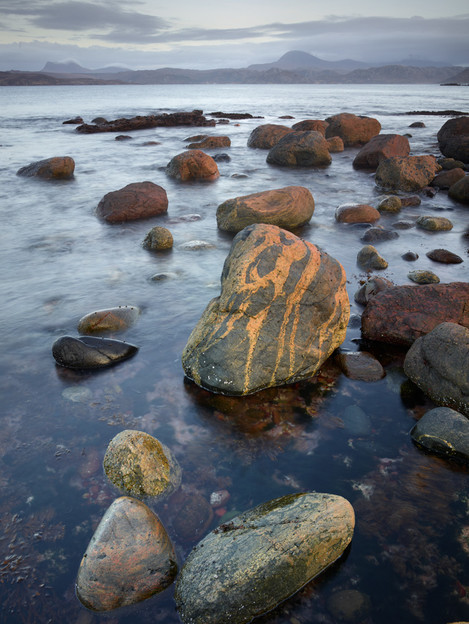 Essentially the IQ180, used in its low ISO mode creates the equivalent of large format transparency film, because we can see the positive colours, but with the flexibility and dynamic range of colour negative film. In practice the resolution may be equivalent of 5x4 or perhaps rather better, depending on the subject surfaces, but at this level that seems to have become slightly immaterial. The image on screen, enlarged to 100%, is so physically present, so three dimensional, that it does not look like digital at all. But as there is no grain, arguably it doesn't really look like film either (a little noise could be applied if that was the goal). To my eyes it represents the most organic photography I have ever seen, and that makes me confident that, if I keep working to improve, I will be able to create the images that have the physical presence, atmosphere, feeling and significance that I seek in the landscape, to help the viewer connect with air, the light, the place, so long as I do my bit. I could ask no more of my main working tool.
Essentially the IQ180, used in its low ISO mode creates the equivalent of large format transparency film, because we can see the positive colours, but with the flexibility and dynamic range of colour negative film. In practice the resolution may be equivalent of 5x4 or perhaps rather better, depending on the subject surfaces, but at this level that seems to have become slightly immaterial. The image on screen, enlarged to 100%, is so physically present, so three dimensional, that it does not look like digital at all. But as there is no grain, arguably it doesn't really look like film either (a little noise could be applied if that was the goal). To my eyes it represents the most organic photography I have ever seen, and that makes me confident that, if I keep working to improve, I will be able to create the images that have the physical presence, atmosphere, feeling and significance that I seek in the landscape, to help the viewer connect with air, the light, the place, so long as I do my bit. I could ask no more of my main working tool.
The IQ180 may be my only Ferrari/Lambo/Aston Martin moment in life, but if I use it for ten years I suspect it should pay for itself OK. It should also continue to give me pleasure, satisfaction and confidence in use. Rather as I felt when I finally figured out how to shoot with 5x4 on location, it feels a lot like coming home. I will be hoping that Phase One can continue to provide the occasional aftercare that any piece of working hardware like this is bound to require. Meanwhile, digital will no doubt have moved on several leaps and bounds by then. Although in image quality terms I am already wondering how it could possibly be better than this. And if, like the cars, it has depreciated meanwhile I'll just have to hope I can afford whatever has followed in its wake.

